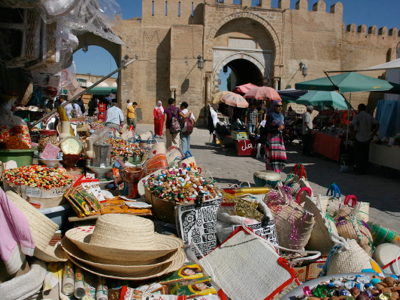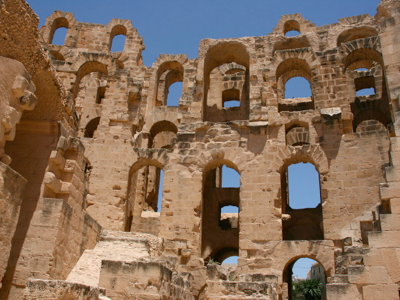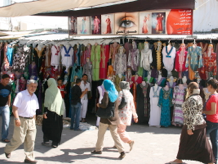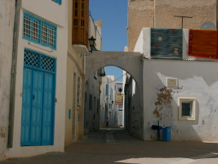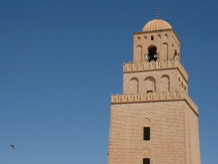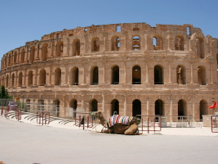North Africa ‘Plus’ Travel Diary

2011
Turkey Tunisia Algeria Iran Transnistria
Although I made a point of waking early this morning to maximise our sightseeing opportunities, we were not able to start exploring as early as I had hoped. The reason was the relentless inflow of work-related e-mails - over 60 overnight - many of which needed thoughtful consideration. I thus began the day spending almost two hours answering e-mails on a wide range of subjects, such as requests for fees relief, petitions for re-consideration of unsuccessful enrolment applications, nominations of students from National Committees that required approval, draft minutes of meetings and various reports that required approval, discussions of proposed (and seemingly urgent) policy changes, and so the list continued. I’ve said it before but it is worth repeating - I don’t think Heads of schools really get true holidays, even when they try to ‘escape’ by travelling to exotic locations with limited internet access as I have tried to do ☺.
And today’s sightseeing really WAS something very special! We stayed in Kairouan last night, whose Great Mosque is regarded as the fourth holiest site in the Islamic world. Furthermore, its old walled city (known as a ‘medina’) was a beautiful example of Tunisia’s traditional way of life, and as our hotel was situated very close to the edge of the medina, and within easy walking distance of the Grand Mosque, we were able to explore these fascinating areas on foot.
Five minutes walk from our hotel saw us within the walls of the medina, enjoying the colour and bustle of the market, the aroma of the spices, the brightness of the wooden shutters and balconies on the white-washed houses, and the extraordinary friendliness and hospitality of the people we met.
After exploring the main market area in the car-free laneway known as Avenue 7 Novembre, we headed off through the even narrower residential laneways through the medina to the northern edge where the Great Mosque was located. Regarded as North Africa’s holiest Islamic site, it was founded in AD 670. Unlike many mosques, it does allow visitors who are not Muslims to enter all parts of the complex except for the prayer hall, and even here, non-Muslims are allowed to see inside through various doors and windows.
The architecture of the Great Mosque is fairly plain and is arranged around a large, open, rectangular courtyard. Having visited mosques in some other countries, where I have experienced lively and vibrant activity, I was surprised by the stark quietness of Kairouan’s Great Mosque - there were no local people present and the only visible movement came from the large flock of birds flying overhead.
Upon leaving the Great Mosque, we were ushered into a carpet shop across the road for an excellent overview of the main courtyard. We spent some time talking with the ower, who told us that there have been almost no overseas visitors to Kairouan for the past half year as a result of the media reports of political unrest. Like many other local people, he was clearly suffering financially by the collapse of the country’s tourism industry.
We checked out from our hotel at about 11 am and began the hour and a quarter drive to El-Jam (sometimes also called El-Jem), 73 kilometres to the south-east. El-Jam is a fairly small town, with a population of just 20,000 people, but it boasts one of Tunisia’s most impressive landmarks - a World Heritage–listed colosseum that was the third-largest in the Roman empire. Built between AD 230 and 238, the colosseum was (and is!) 138 metres long by 114 metres wide, with three tiers of seating 30 metres high, giving it a seating capacity of 30,000, half as many again as the town’s present population.
Although many of the spectator seating areas have collapsed, the colosseum is generally still very well preserved - arguably better than the “Big One” in Rome. We were able to climb stairs to the top of the structure to get an excellent overview of the building before descending down to the long underground passageway where the animals, gladiators and other victims spent their last hours before being led into the arena to provide entertainment for the masses.
A short walk of about a kilometre from the colosseum took us to the town’s museum where we saw a very impressive display of Roman mosaics, mostly dating from the era when the colosseum was built.
After refreshing ourselves with a very welcome cool drink, we then headed off to the day’s final destination, the city of Sfax on Tunisia’s south-east coastline. The sightseeing highlight of this, Tunisia’s second-largest city (with a population of about 300,000 people) was the large walled medina. It is said that the best time to explore the medina is in the late afternoon, and that is precisely what we did. Much larger, though less traditional, that Kairouan’s medina, Sfax’s medina gave us an impressive insight into the city’s retail and commercial activity.
Perhaps more surprising (for me) was some of the political graffiti on the walls that remained from the recent political turmoil. Much of it seemed to be supportive of the Communist Party, and I was amazed to see one stencilled example that showed the worker-peasant-intellectual statue at the Tower of the Juche Idea in Pyongyang.
I must try to find out more about this very expected link between Tunisia and North Korea!
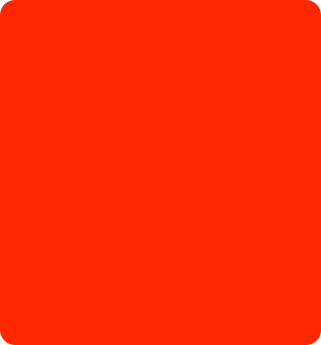
Day 9 - Kairouan to Sfax, Tunisia
Tuesday
21 June 2011
Today’s Bonus Images








